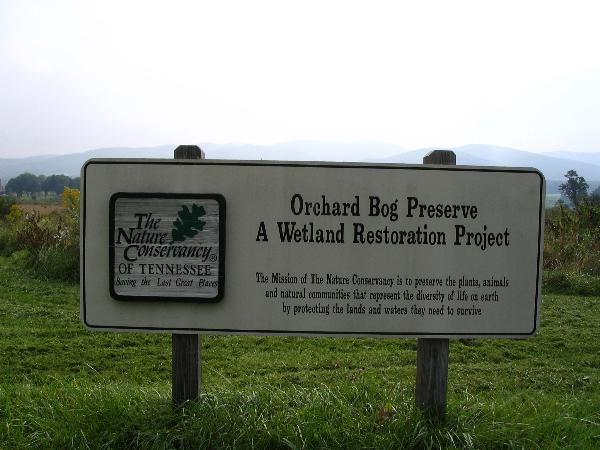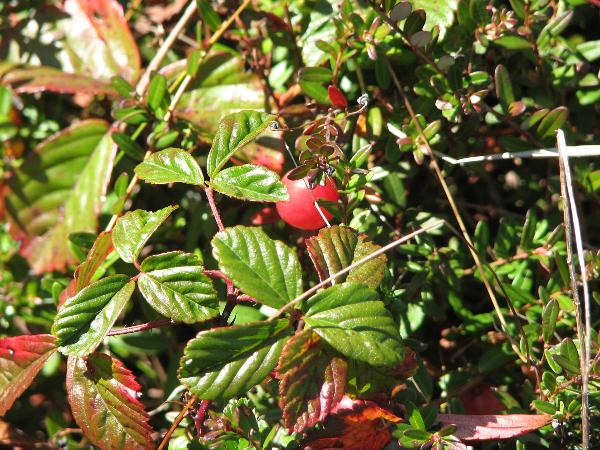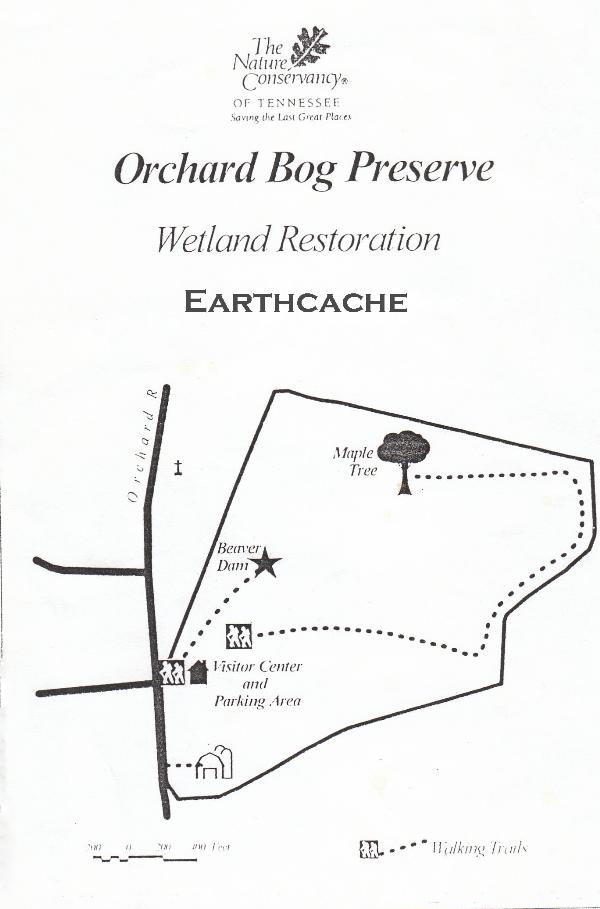Orchard Bog Preserve EarthCache
-
Difficulty:
-

-
Terrain:
-

Size:  (not chosen)
(not chosen)
Please note Use of geocaching.com services is subject to the terms and conditions
in our disclaimer.
Shady Valley, Tennessee. Off Highway 91 toward
Elizabethton. Easy walk with absolutely flat landscape.

The Nature Conservancy At
Work
"This property is owned and managed by The Nature
Conservancy, a private, not-for-profit, international conservation
organization. The mission of The Nature Conservancy is to preserve
the plants, animals, and natural communities that represent the
diversity of life on Earth by protecting the lands and waters they
need to survive. Visitors to Nature Conservancy preserves in Shady
Valley are asked not to leave the mowed trails and walkways due to
environmental hazards such as poison sumac, hornets' nests,
poisonous snakes, and concealed areas of deep water. Research plots
are also maintained off-trail that must not be disturbed. For more
information about The Nature Conservancy's properties, or to become
a Conservancy member, please contact Charles McQueen, Shady Valley
Preserves Manager, at (423) 739-2441 or cmcqueen@tnc.org."
Since this is an ecologically sensitive area NO
BUSHWHACKING IS NEEDED AND SHOULD NOT BE DONE
Raised bog formation started at the end of the last
glaciation - some 10,000 years ago - when the glaciers and ice
sheets had retreated northward. At this time much of Northern
Tennessee was covered by shallow lakes left behind by the melting
ice. Lakes also formed where glacial ridges, such as eskers,
impeded free drainage and trapped the water.
A bog is an area of moist, soggy ground, usually with peat
formed by the decay and carbonization of mosses and other
vegetation in the bog. The process of bog formation is continuous,
with new crops of reeds and mosses growing over the debris of
earlier generations. Thus the surface of a bog is gradually
elevated and if the bog becomes oversaturated with water, it may
burst, deluging nearby fields with mud. Bogs have been developed by
glacial ice blocks/sheets which have melted over thousands of
years. Stunted evergreens, shrubs and other plants have grown in
bogs due to the extremely acidic soils. The floor of bogs is
normally covered with a thick carpet of sphagnum moss.

The Bog Cranberry
The Orchard Bog is also a wetland. Rain and snowfall supply
most of the water to the Bog, which is why this and most bogs are
low in nutrients. They have strongly acidic water and dense,
sometimes floating mats of vegetation. A carpet of sedges and
mosses, usually sphagnum moss, covers bogs with colors from pale
green to dark red. As the bog ages, the mosses and sedges
accumulate in layers of peat. Low shrubs and trees such as pine and
black spruce are able to grow in bogs since they are adapted to the
acidic water and low nutrient levels. Some bogs often look like a
forest that is not growing vigorously. At one time the Bog was
drained and most trees were removed. You can find plants such as
the sundew, the pitcher plant, cranberry, sedges and cotton grasses
in bogs. Once, the cranberry flourished in the Orchard Bog and is
being restored by the Conservancy. Cranberry plants can be found on
the edge of some of the walking trails.

Bog Walking
Trails
NOTE: In order for you to claim a find you must do
two things: 1. Post a picture of yourself with GPS in hand and the
Bog shown in the background. 2. You must also email (not post) the
answer to: what is the elevation of the Bog at the given
coordinates? Have fun and enjoy this wonder of Mother
Nature
This Earthcache was approved by the
Geological Society of America
| We have earned GSA's highest
level: |
 |
Additional Hints
(Decrypt)
Qba'g jnaqre bss gur genvy, lbh jvyy trg fghpx naq znl arire or frra ntnva!